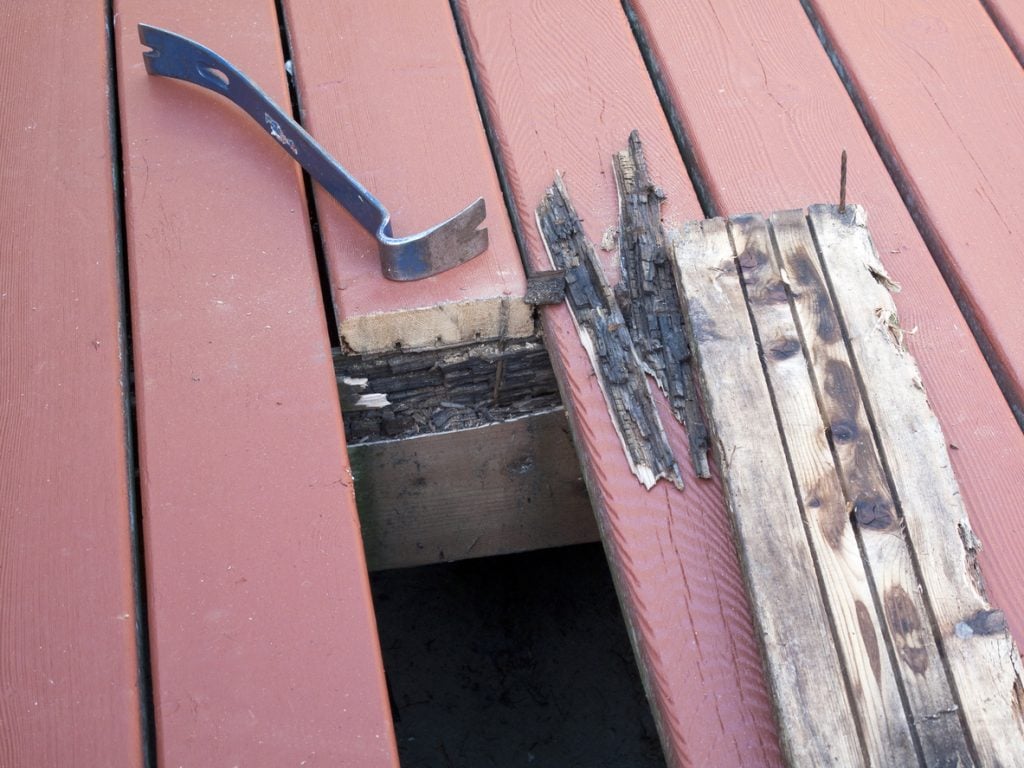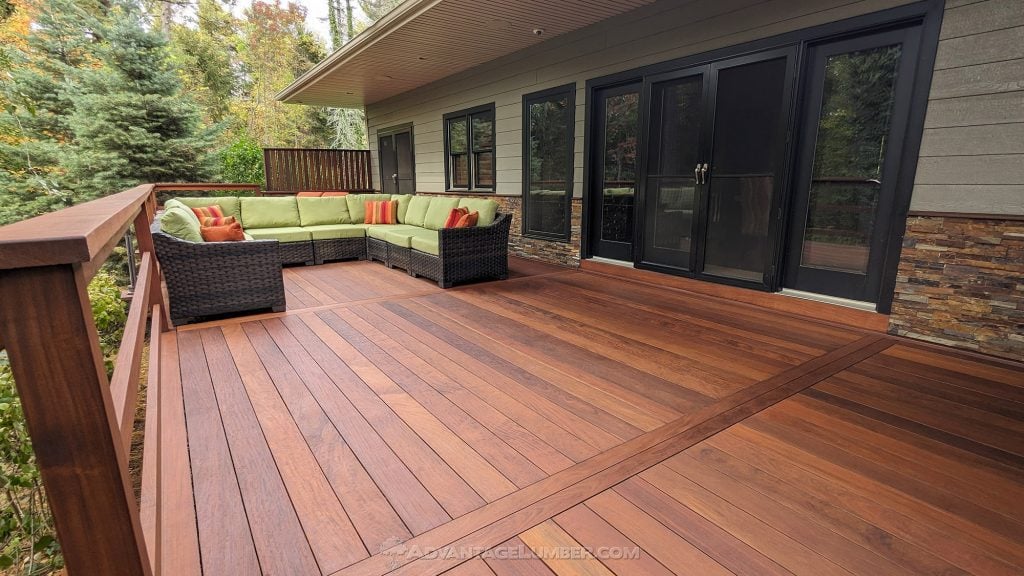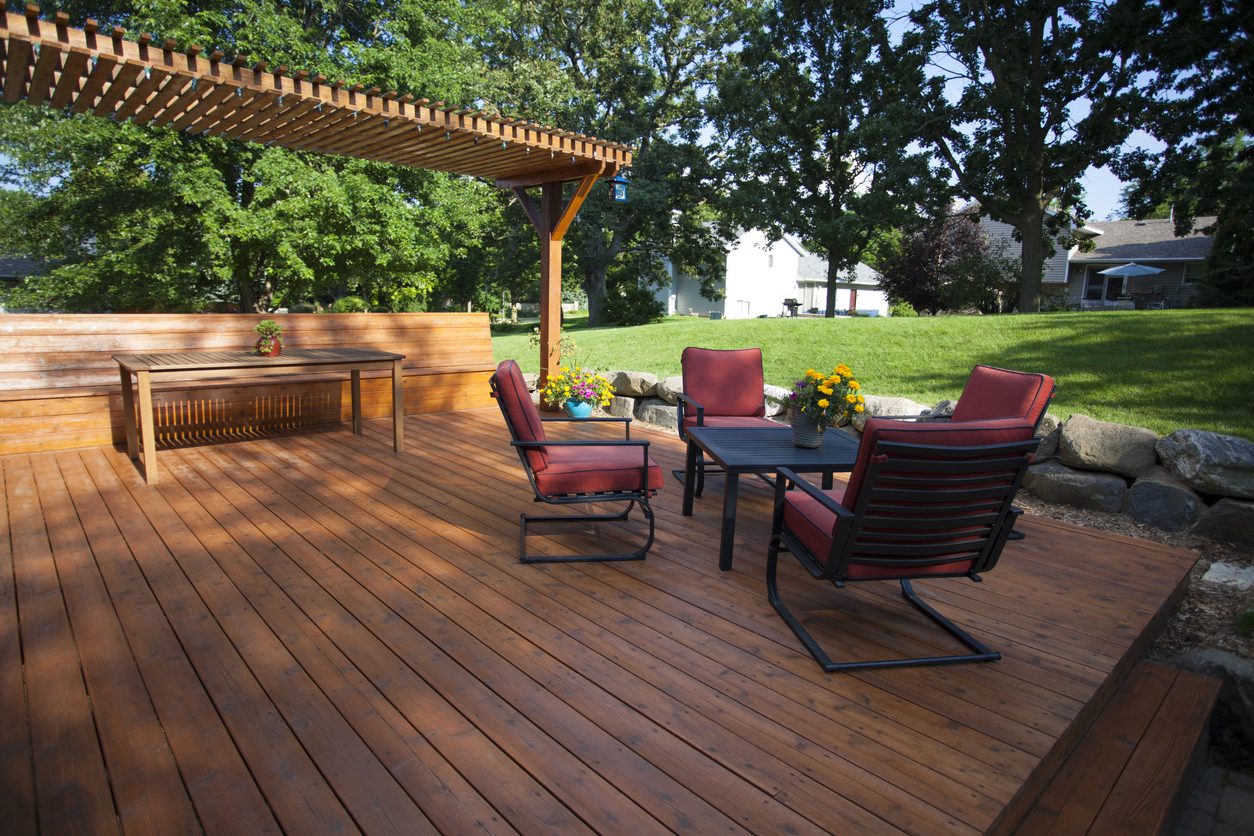When it comes to building a deck, the type of wood you choose can make all the difference in terms of durability, aesthetics, and maintenance. Among the many options available, cedar decking stands out as a popular choice, often compared to alternatives like pressure-treated lumber pine and redwood.
In this post, we’ll explore how cedar decking stacks up against these other wood options, with a particular focus on its advantages over pressure-treated wood.
Cedar Decking: A Natural Standout
Cedar is widely regarded as one of the best choices for decking due to its natural beauty and inherent properties. Western red cedar, in particular, is prized for its rich, warm tones, tight grain, and pleasant aroma. But beyond its visual appeal, cedar’s standout feature is its natural rot resistance.
This is thanks to the oils and tannins present in the wood, which act as a built-in defense against moisture, insects, and decay. For homeowners looking for a low-maintenance, long-lasting decking material, cedar’s natural durability is hard to beat.
Pressure-Treated Lumber: A Common Alternative
Pressure-treated lumber, typically made from Southern Yellow Pine on the east coast and Doug Fir on the west coast, is another widely used decking material, largely because of its affordability. To make it suitable for outdoor use, this wood undergoes a chemical treatment process that forces preservatives deep into its fibers, enhancing its resistance to rot and insects.
While this process has evolved over the years, it’s worth noting that pressure-treated lumber relies entirely on these artificial treatments for its durability—unlike cedar, which comes equipped with its own natural defenses.
Historically, pressure-treated formulas contained arsenic (in the form of chromated copper arsenate, or CCA), which made the wood incredibly resilient, often lasting 20 to 30 years. However, this came at a cost. Studies revealed that arsenic was leaching into the ground beneath decks and other structures, posing environmental and health risks. As a result, arsenic-based treatments were phased out in the early 2000s, replaced by newer, more environmentally friendly preservatives like alkaline copper quaternary (ACQ) and copper azole (CA).
While these modern treatments are safer, they’ve come with a trade-off. Homeowners have reported that decks built with the newer pressure-treated lumber often begin to rot in as little as 10 to 15 years—a significant drop from the longevity of the older arsenic-treated wood. This has led to frustration among those who expected the same durability from their decks, only to find premature decay setting in despite the initial cost savings.
Cedar vs. Pressure-Treated: The Rot Resistance Factor
When comparing cedar to pressure-treated lumber, the difference in rot resistance is stark. Cedar’s natural oils give it an edge without the need for special chemical treatments. Pressure-treated wood, on the other hand, depends on those treatments to preserve it—and when they fail or wear off, the wood becomes vulnerable. The shift away from arsenic-based formulas has only widened this gap, as the newer treatments don’t seem to hold up as well over time.

This isn’t to say pressure-treated lumber is a poor choice for every project. It’s still a budget-friendly option and can perform adequately in certain conditions. However, for those prioritizing longevity and a more natural material, cedar is superior in its ability to fend off rot without relying on chemicals that may degrade or leach over time.
Other Wood Options: Ipe, Cumaru, and More
Beyond cedar and pressure-treated lumber, other wood options like tropical hardwoods (e.g., Ipe, Cumaru, Tigerwood, Teak, or Mahogany) also enter the decking conversation. Hardwoods are incredibly dense and durable, often lasting up to 75+ years with minimal rot. However, their high cost and challenging installation (due to their hardness) make them less practical for many homeowners.

Softwoods like untreated pine or fir are occasionally considered to save money, but without treatment, they lack the durability needed for outdoor decking, quickly succumbing to rot and insect damage. This leaves cedar in a sweet spot—offering a balance of natural durability, affordability, and workability that’s hard to match.
Maintenance Matters
Regardless of the wood you choose, proper maintenance is key to prolonging the life of your deck. For cedar, this means regular cleaning and the occasional application of a protective sealant or stain to enhance its natural resistance and preserve its color. Left untreated, cedar will weather to a silvery gray, which some homeowners love, though it doesn’t affect its structural integrity.
Pressure-treated lumber also benefits from maintenance, such as sealing or staining, to protect the wood as the chemical treatments wear off over time. Without this care, its susceptibility to rot increases, especially with the newer, less robust preservatives. In both cases—cedar and pressure-treated—consistent upkeep can add years to your deck’s lifespan.
The Verdict
So, how does cedar decking compare to other wood options? It shines as a naturally rot-resistant, visually appealing choice that doesn’t rely on chemical treatments to perform. Compared to pressure-treated lumber, cedar offers a clear advantage: it avoids the environmental concerns of leaching chemicals and the disappointing durability of modern treated wood, which has left many homeowners dealing with rot far sooner than expected. While options like redwood and hardwoods have their own merits, cedar strikes an ideal balance for most decking projects.
If you’re weighing your options for a new deck, cedar’s natural superiority—paired with proper maintenance—makes it a standout choice that’s likely to serve you well for years to come.
